About Ebykr
Ebykr celebrates classic and vintage lightweight bicycles through provoking imagery and opinion. Let's roll together!
About Ebykr
Ebykr celebrates classic and vintage lightweight bicycles through provoking imagery and opinion. Let's roll together!
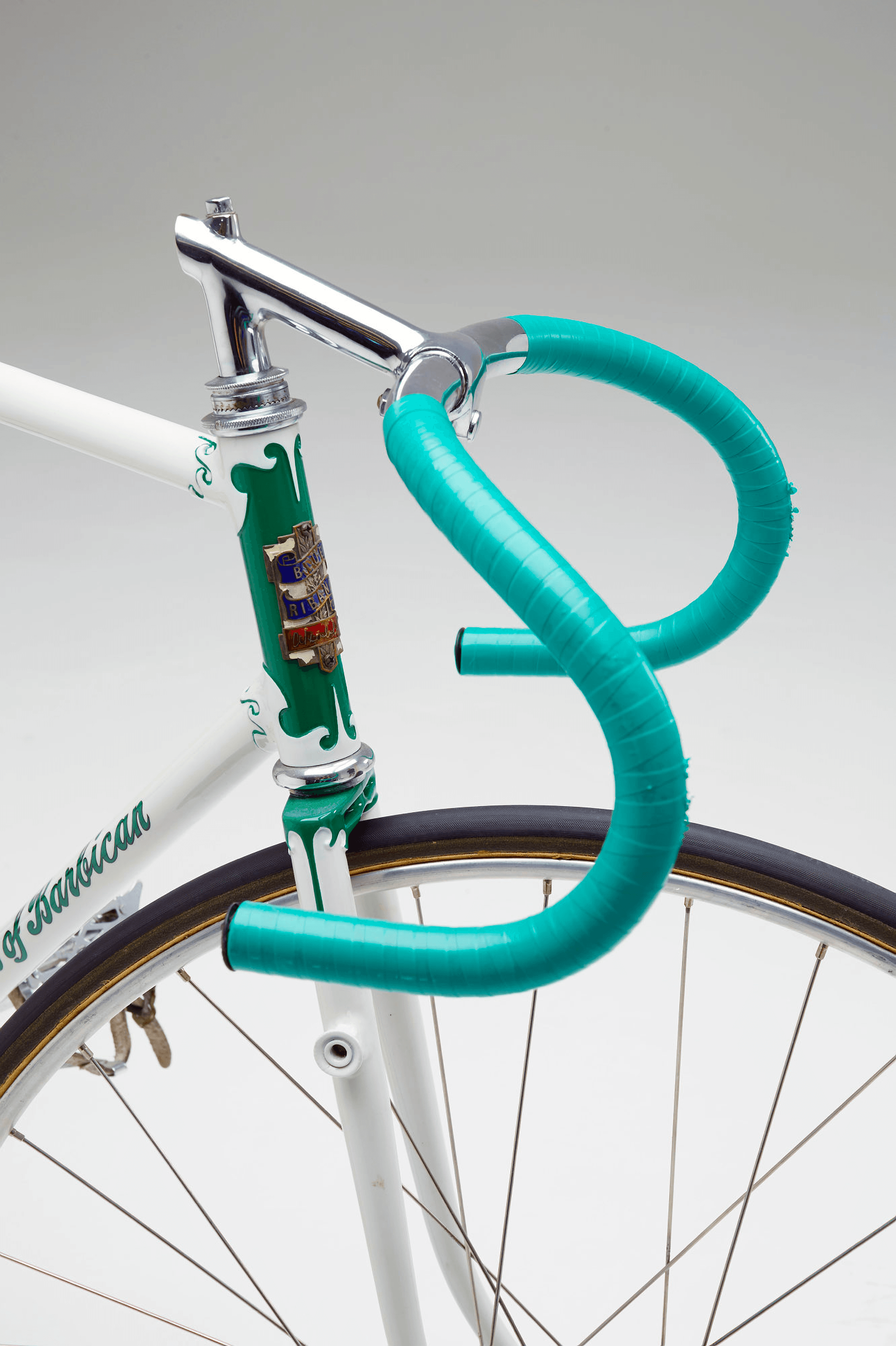

The job of a bicycle designer parallels that of a surgeon in many senses: triage what’s wrong, decide what no longer functions, find a way to solve the problem and repair or replace whatever needs fixing. And like any good surgeon knows, if the spine fails, so too does the rest of the body.
In the cycling world, the frame is a bicycle’s spine. Without a healthy frame to attach components onto, a bike can only function to the best ability of that hobbled frame. Indeed, frames are often the weakest links on bicycles, rusty chain puns notwithstanding.
And so when Albert Hobbs claimed in an advertisement, “A cycle is as good as its frame,” it served as a fine indication the founder of Hobbs of Barbican understood his craft the way a surgeon understands the human body. With such credibility to his character and name, Hobbs began manufacturing well-crafted bicycles with frames that were not only functional, but also strong and reasonably well refined.
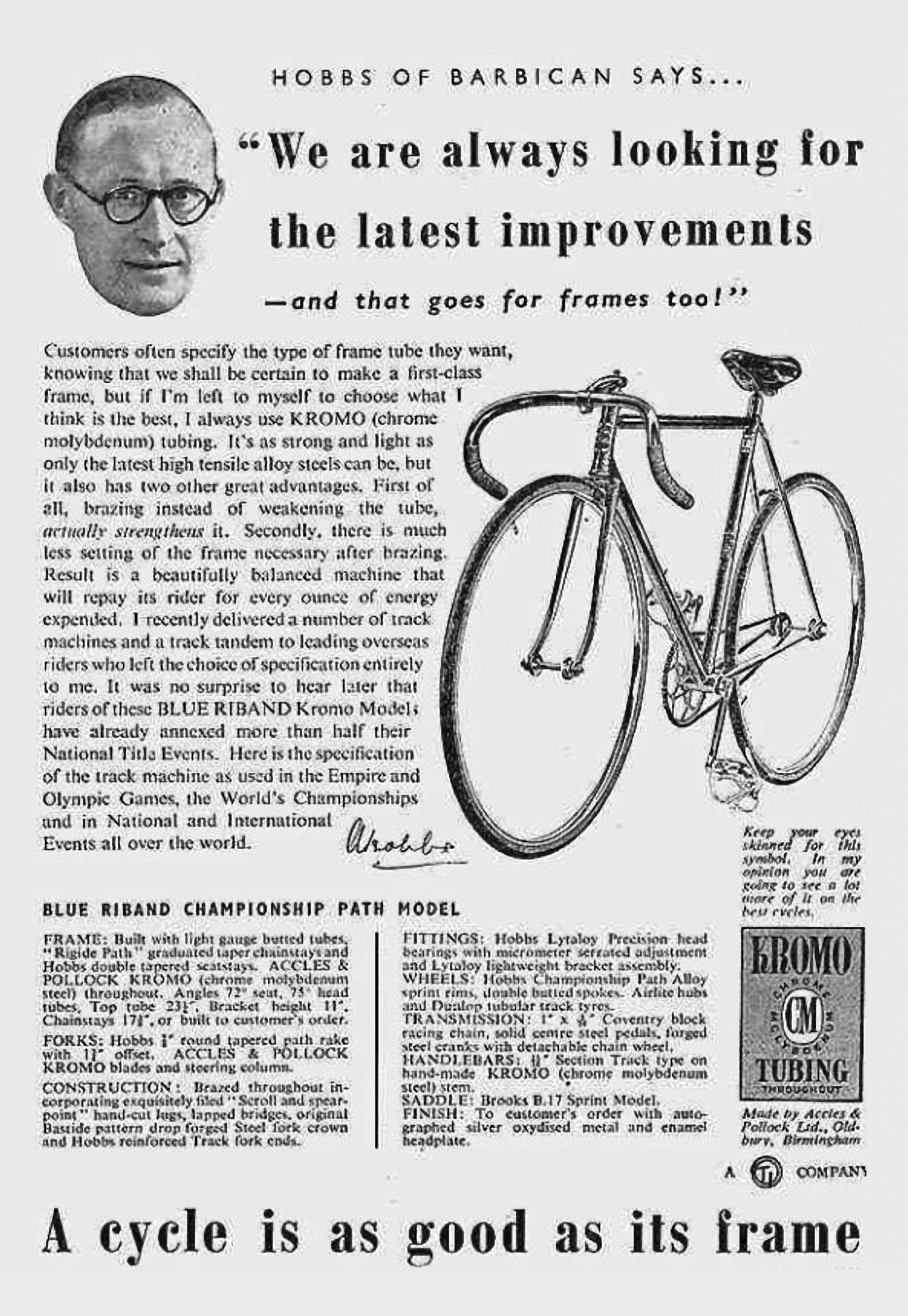
This article references information graciously made available at Bruce Robbins’ Hobbs of Barbican site.
Hobbs started his business in 1930 at what is now the Barbican Centre located in central London, though his earliest-dated model, a Raceweight, was not commercially produced until February 1933. Back then, the Barbican was an outwork — not a gateway or military outpost, as is commonly associated with the term.
Like so many other bicycle manufacturers of the era, Hobbs made a name for himself by crafting frames that stressed durability and then punctuating them with ornate, hand-filed lugs. Hyman Hetchin’s frames are often thought of in this way, too.
Hobbs’ business took off quickly and continued gaining momentum through the 1930s and even into the very early 1940s. Hobbs of Barbican had been founded in an era conducive to selling bicycles, as the ridership boom of the 1920s carried over into the early thirties to create a thriving international cycling industry. All of that would evaporate a short but generally sweet decade later when the Second World War struck, with British involvement commencing in 1939.
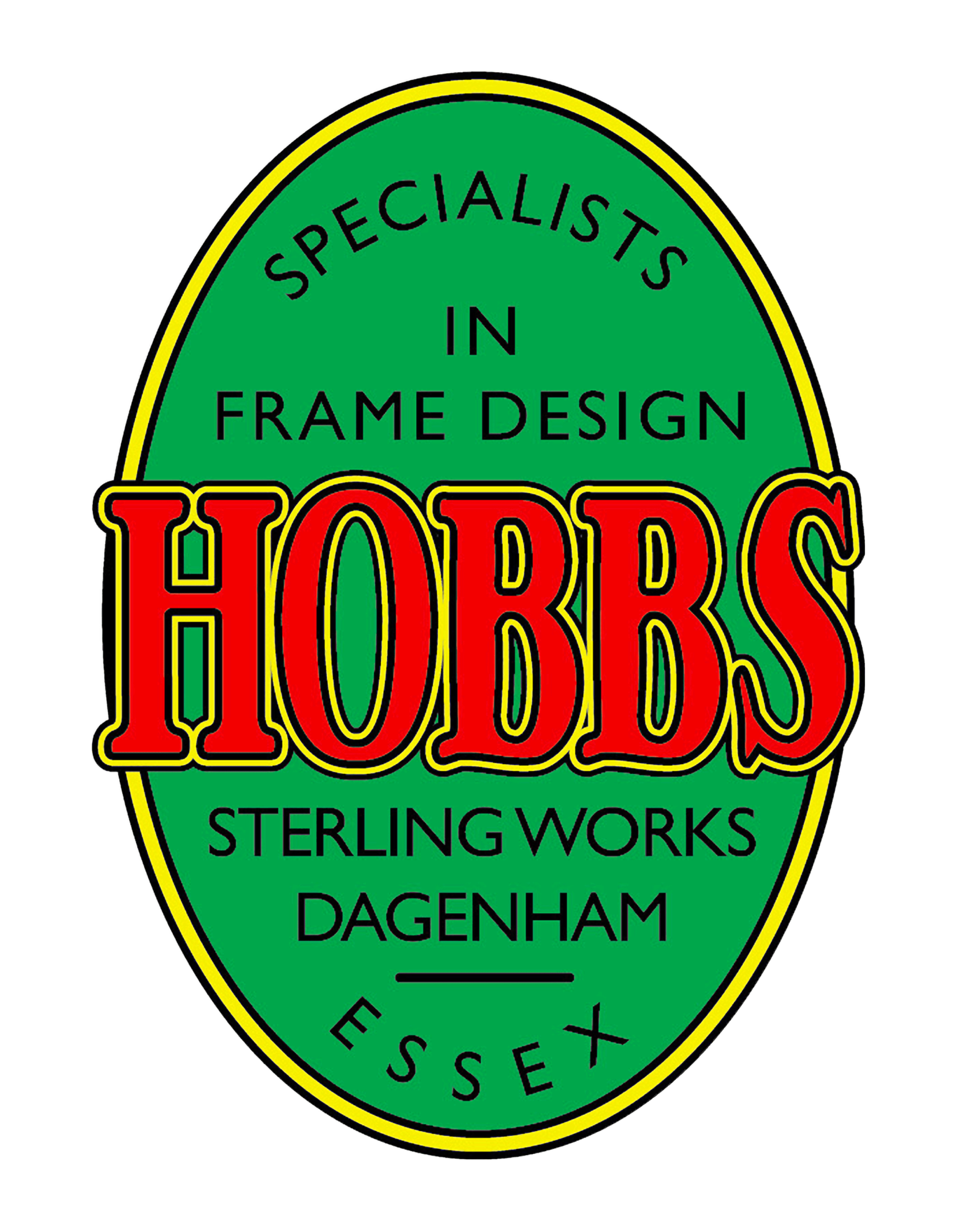
Once the war hit, Hobbs suffered mightily. The city of London faced severe casualties, as well as physical damage, and the robust pre-war cycling market vanished faster than an opening breakaway does. Hobbs was forced to move his operation out of the Barbican and into Sterling Works at Dagenham.
After the war had taken its toll, Hobb’s bicycle business started thriving once again but his war-related hardships did not end with Victory Day on May 8, 1945. Hobbs had chosen to locate his frame building business in the same factory that housed the construction of Sterling and Owen machine guns, and eventually his bicycle business was forced out of the factory for national security purposes.
Hobbs continued operating his business as a bicycle retailer, but the company as previously known was now in danger of failing. Hobbs of Barbican finally succumbed to these market forces in the late 1950s, only after subsisting as a retail operation – the glorious frame building side of the company now gone – for several years.
There was a brief resurgence of the brand in the 1970s, but unfortunately for classic lightweight bicycle enthusiasts, it was relatively short-lived. The resurgence consisted of a limited run of Hobbs’ most popular model, the venerable Blue Riband, but several collectors have since speculated the new production run was simply an effort to use up extra lugs that had been sitting around for years.
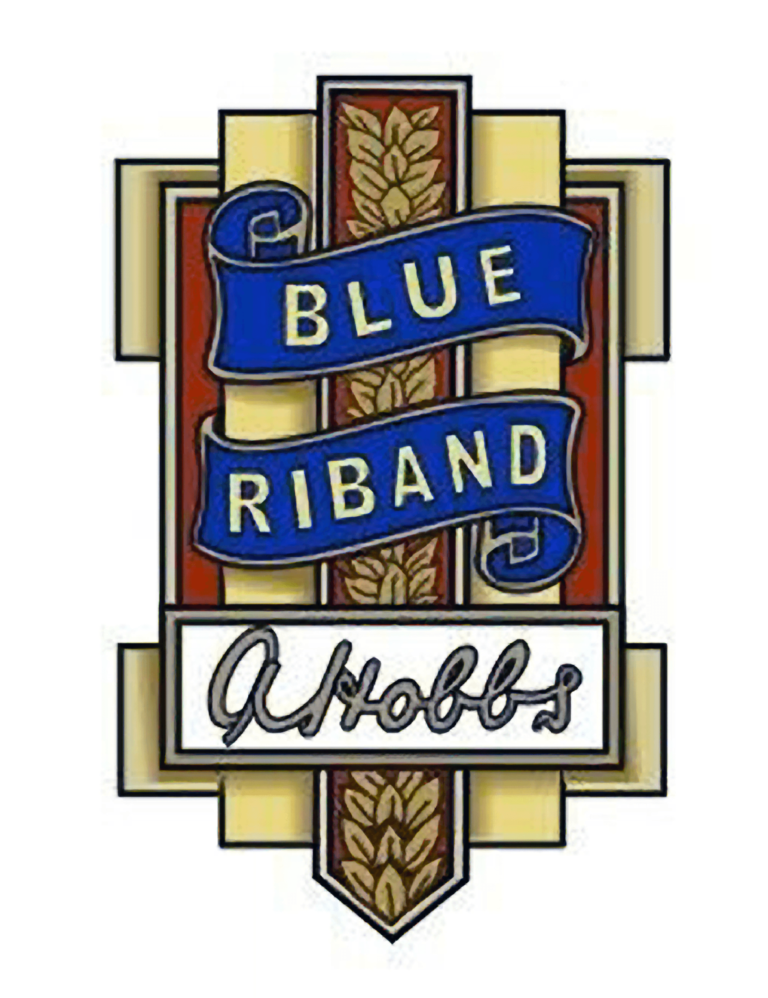
Barring this exception in the 1970s, the Hobbs of Barbican brand died with an epitaph all too common among other cycling-related brands of its era: beautiful bicycles and their breakthrough components sacrificed to the ravages of war. The desire for Albert Hobbs’ lovely bicycles never faded, though, as vintage collectors began seeking out his frames with their ornate, signature lug work and proudly raked forks with their double crowned construction, and the all-around craftsmanship and hand-built prowess each of these came to embody over the years.
Hobbs of Barbican covered all the bases in that regard. Throughout its two and a half decades as a frameset building entity, the company also supplemented those efforts by manufacturing standout components, too. These well crafted components were marketed under the Lytaloy brand name and only sold in a very limited selection.
Lytaloy parts certainly make for beautiful components, with many featuring highly polished finishes and meticulous craftsmanship, but some believe the components were made by subcontractors and merely marketed with the Hobbs of Barbican/Lytaloy name. Regardless, it showed Albert Hobbs’ desire to present the highest-quality products possible to his customers, which was reflected in these fancy components every bit as much as in his well crafted and popular framesets.
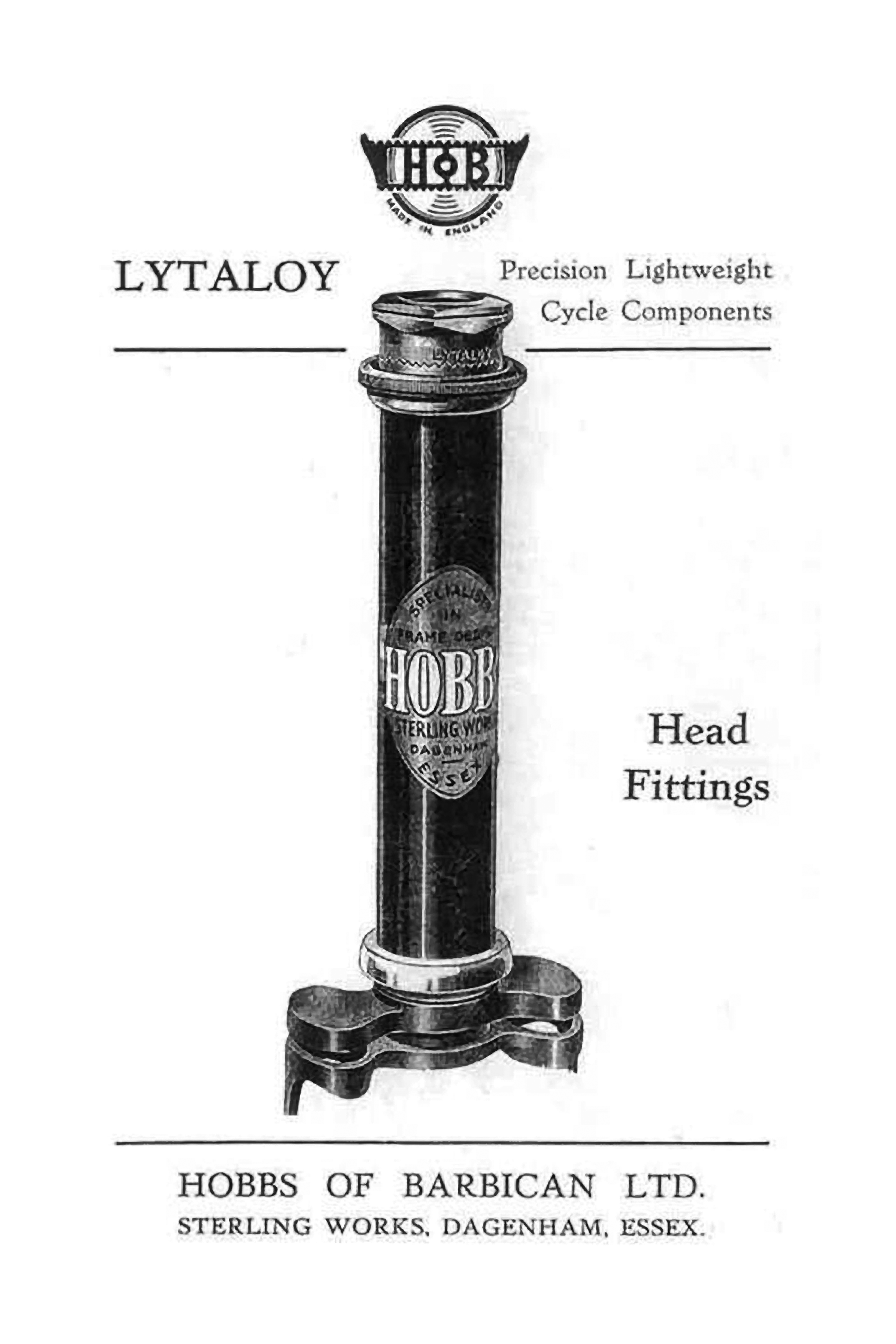
The Lytaloy line included headsets (which boasted a micrometer adjustment using a serrated cone and lockring), pedals, brakes, mudguards, bottom brackets and light brackets. It also included an alloy chain, but this was met with less success than the other components due to a lack of durability that caused the chains to break frequently.
As was the case with his frames, Hobbs marketed his Lytaloy components effectively and with gusto. This was evidenced in a catalog that describes his pedals as,
“A refinement that will find an immediate appeal among all enthusiastic cyclists whether they ride for business, pleasure, or sport and the price is reasonable for such a high grade component.”
The chainwheel set was marketed as a light, yet strong set-up, with a finer focus on the strength aspect of the component. Touting the sturdy, fluted crank arms made from an aluminum alloy that had only recently hit the market, Hobbs stressed the importance of strength over weight savings.
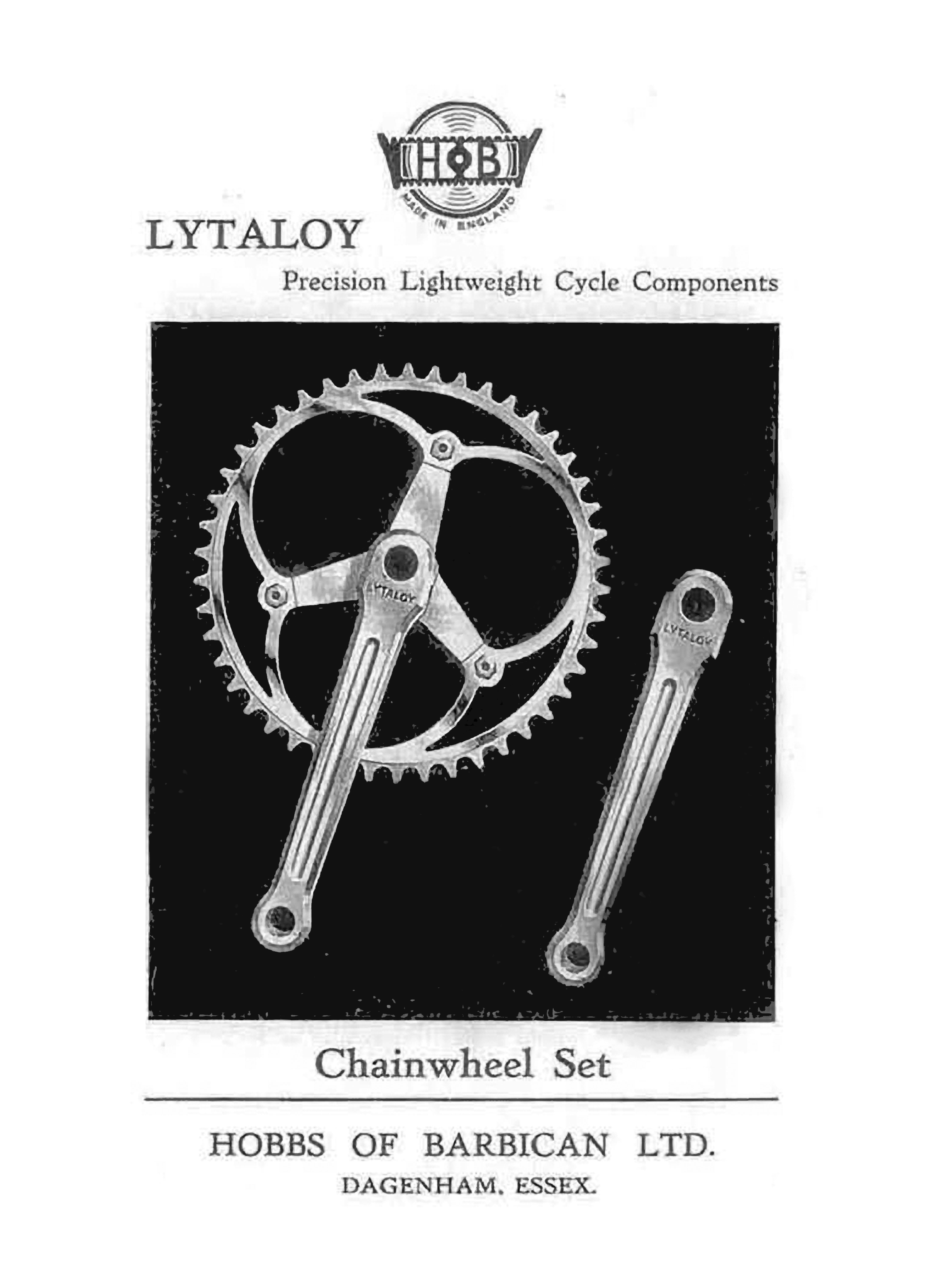
In addition, chainring replacements were lauded as easy endeavors due to the fact that neither the crank arm nor pedal needed to be removed for the process. This is no great feat nowadays, but in the late 1930s and early 1940s when the product first hit the market, it was a relatively new concept and certainly worth mention in cycling adverts and reviews.
Hobbs presented several models for distribution in its relatively brief history. With ever-changing production methods and constantly shifting market dynamics, his models varied drastically in style and pricing throughout the nearly three decades Hobbs of Barbican sold its products.
The most popular model, the Blue Riband, was hand-built by the company’s finest frame builders and featured ornate lugs and Hobbs or Lytaloy components such as pedals. Though much of the information regarding specific models has faded over the years, remaining catalogs feature such models as: Continental, Raceweight and Criterium.
Most models were available in either a lugged or fillet-brazed version. As any bicycle collector knows, innovation is what drives the cycling market, where outdated techniques become obsolete and bicycles made using those techniques become vintage.
With the pursuit of innovation in mind, Hobbs dabbled in new frame production methods, bicycle models and marketing ideas. He wasn’t afraid to try altogether new frame materials, either. In the undated ad shown above, a bespectacled Hobbs himself advertises special Kromo steel tubing (known today as Cro-moly, or Chromium-molybdenum) and touted his desire for innovation by boldly proclaiming,
“We are always looking for the latest improvements – and that goes for frames, too!”
Claiming that brazing strengthens the tubing instead of weakening it, Hobbs displayed his knack for marketing and showed exactly why his bicycles were successful when others faltered: he related effectively to the public and marketed his product with a confidence that exuded real quality.
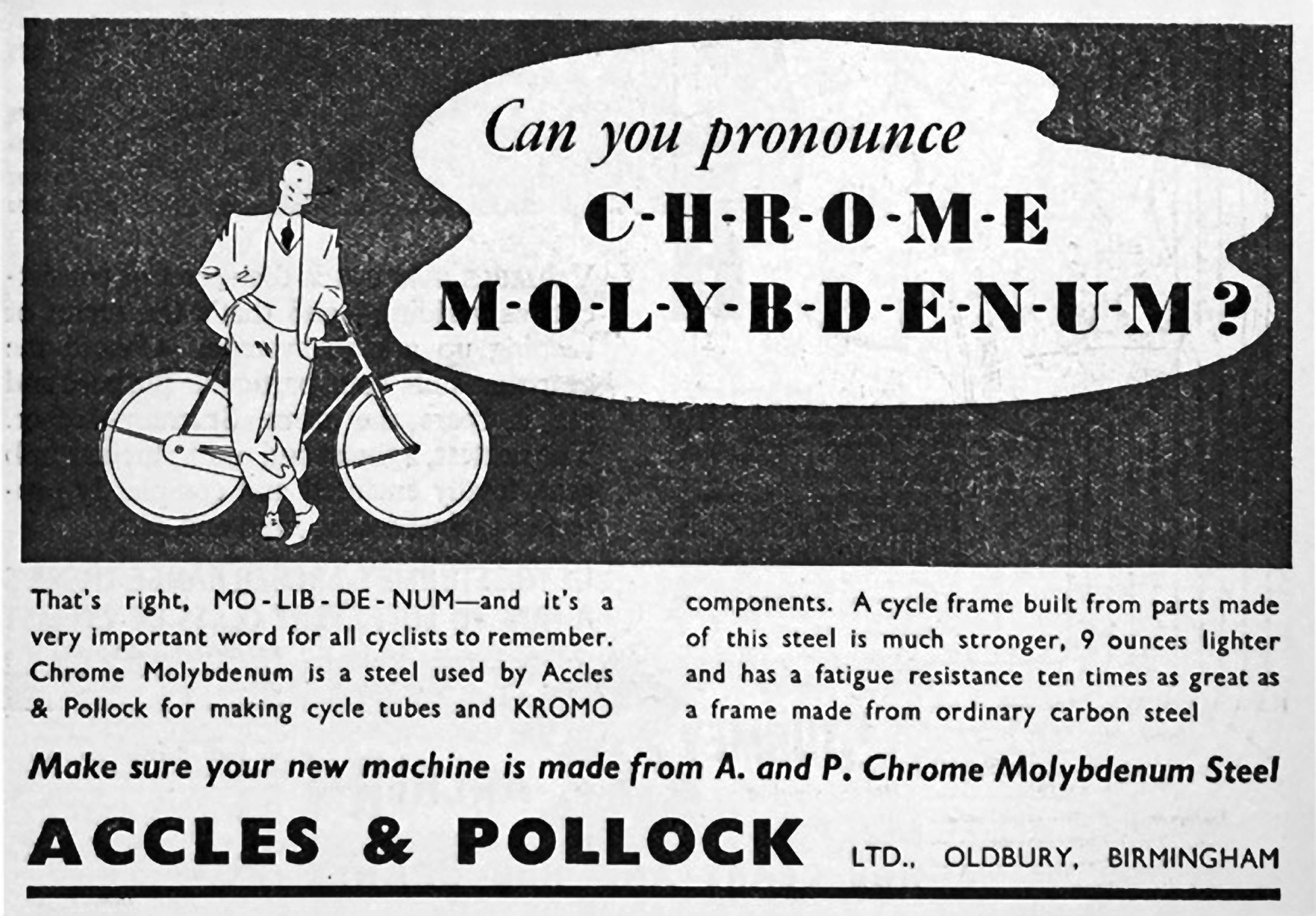
Several bicycles featuring Kromo tubing were featured in the 1952 Hobbs of Barbican catalog, starting with the popular Clubweight model. The Sportsweight model was also featured in that catalog. It was available in Kromo tubing and reviewed in a 1949 issue of “Cycling.” The model was met with favor by the reviewer, who dubbed it, “A good, standard, lightweight bicycle at a moderate price.” What more could most of us ask for?
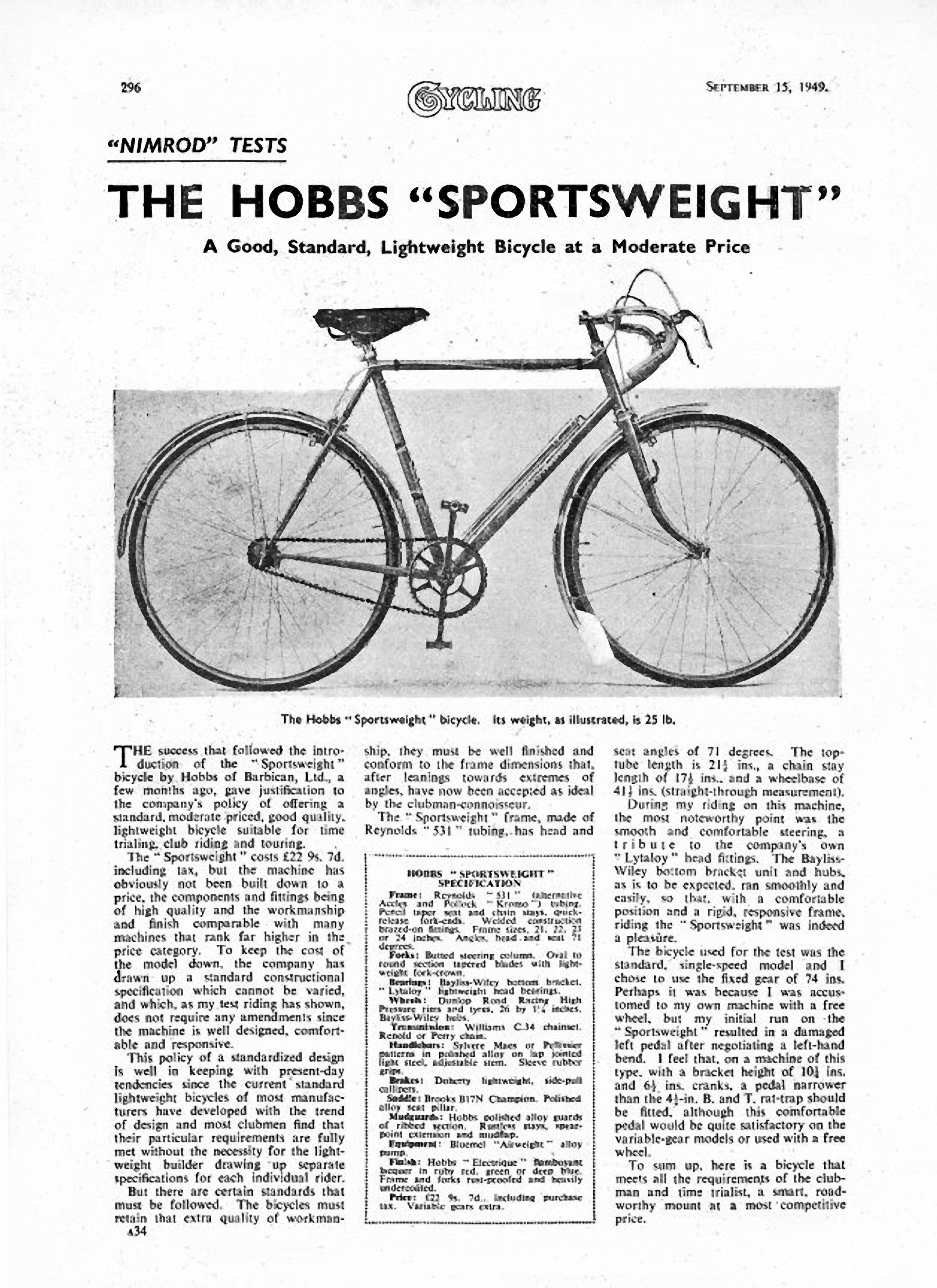
Again, Hobbs took his positive press to the bank, creating personalized messages for the company’s best buyers to assure them its products were the finest available. Kromo tubing became a staple in the Hobbs of Barbican line and most models either came stock with the tubing or were available with Kromo tubing as an option. This was all despite Birmingham-based steel tubing manufacturer, Accles & Pollock, quietly manufacturing Kromo all along.
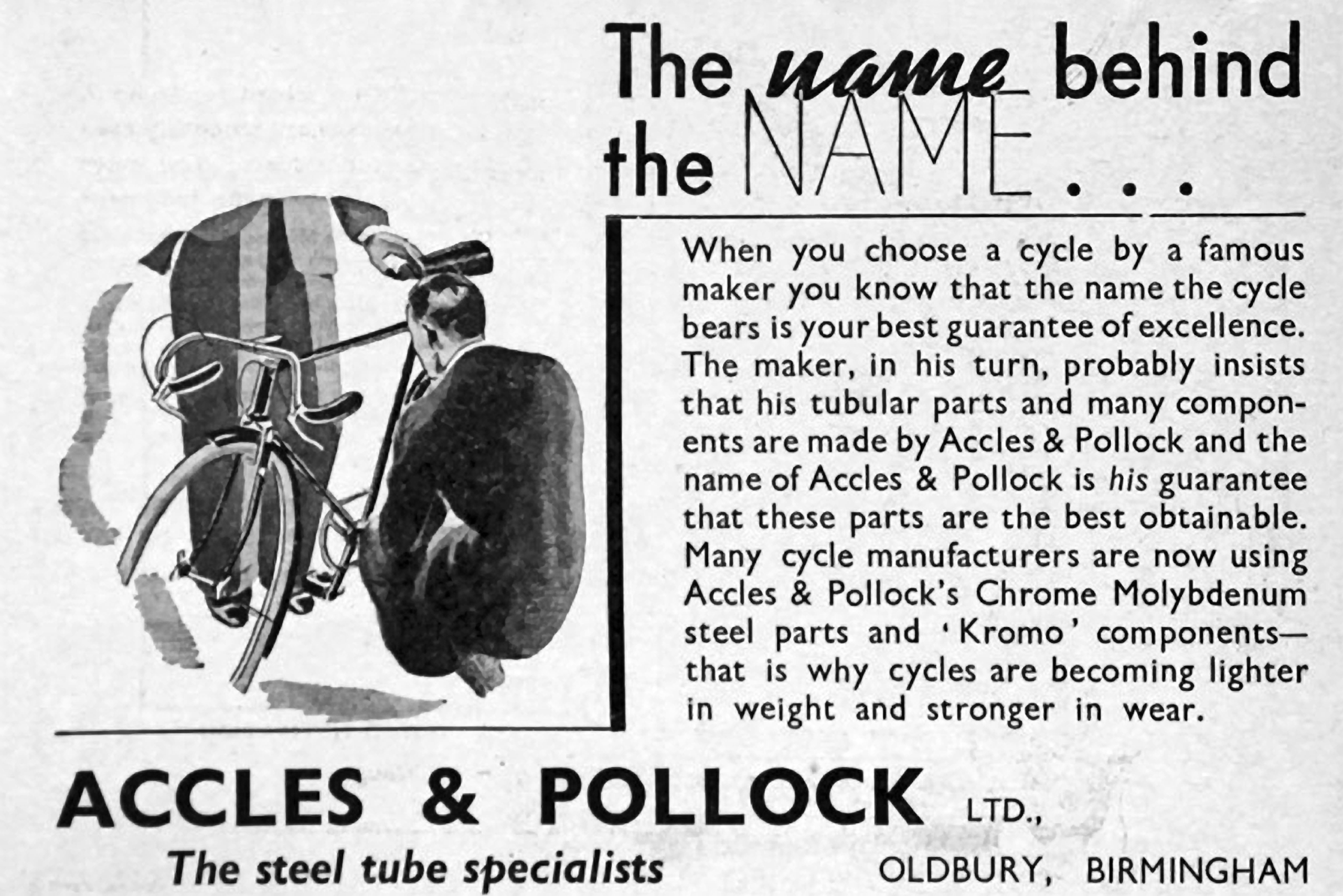
According to Hobbs of Barbican’s 1937 catalog, the Continental model featured Reynolds 531 steel, Continental-type fork crown, Dunlop tires and various other accouterments such as an oil gun and air pump. The catalog also boasted that the bicycle’s specs and design were crafted to,
“Incorporate many of the features developed abroad under the exacting test of continental massed start road racing, but it is important to note that the design has been expertly adapted to existing British conditions.”
The Continental Superbe was also featured in that catalog. It was a similar model to the Continental but came spec’d with slightly higher-quality components. For those riders with needs beyond the world of gears, framesets were available that accommodated either geared drivetrains or fixed single speeds.
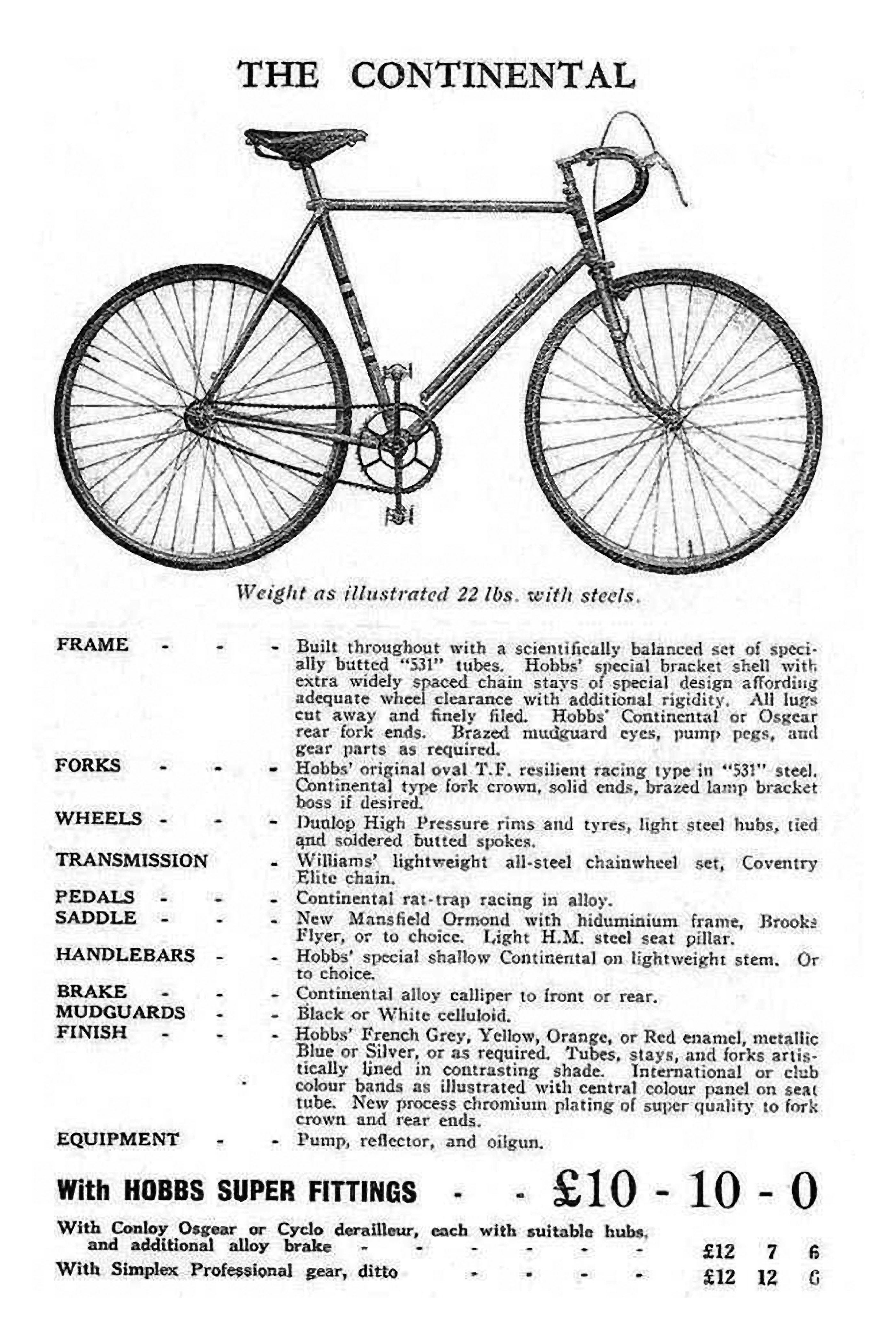
By 1949, the Hobbs of Barbican line had expanded significantly. The Blue Riband found itself as the centerpiece of this family, but quirkier models, such as the Blue Riband Tricycle and two different models of tandems, the Superbe and the Race Lite, added to the diversity of Hobbs’ offerings and gave various cyclists different options for their commuting or racing needs. Make no mistake, these models were not without purpose; with a 60 inch wheelbase and tight racing geometry, the Race Lite Tandem was a solid race bicycle aimed toward the criterium circuit.
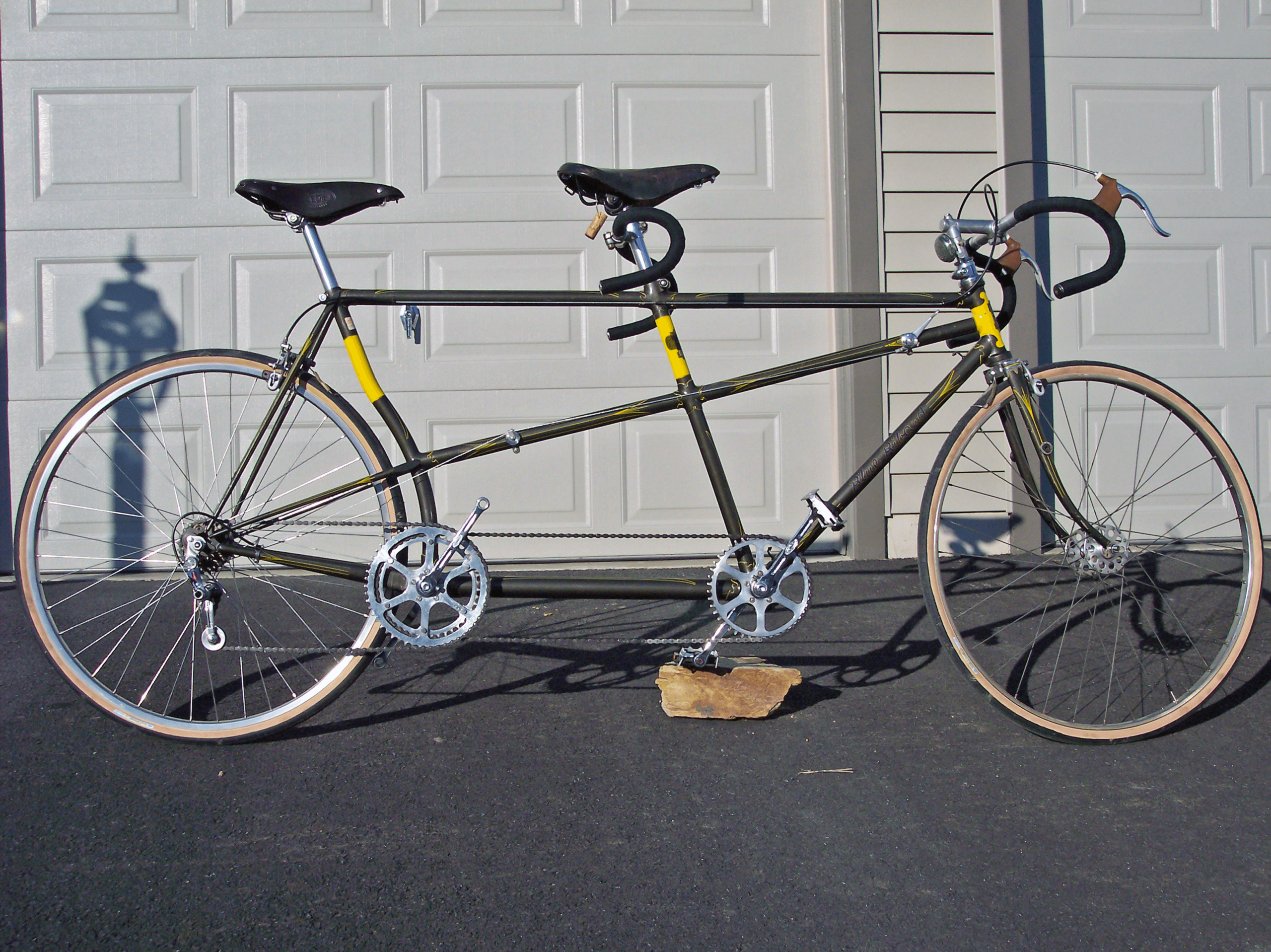
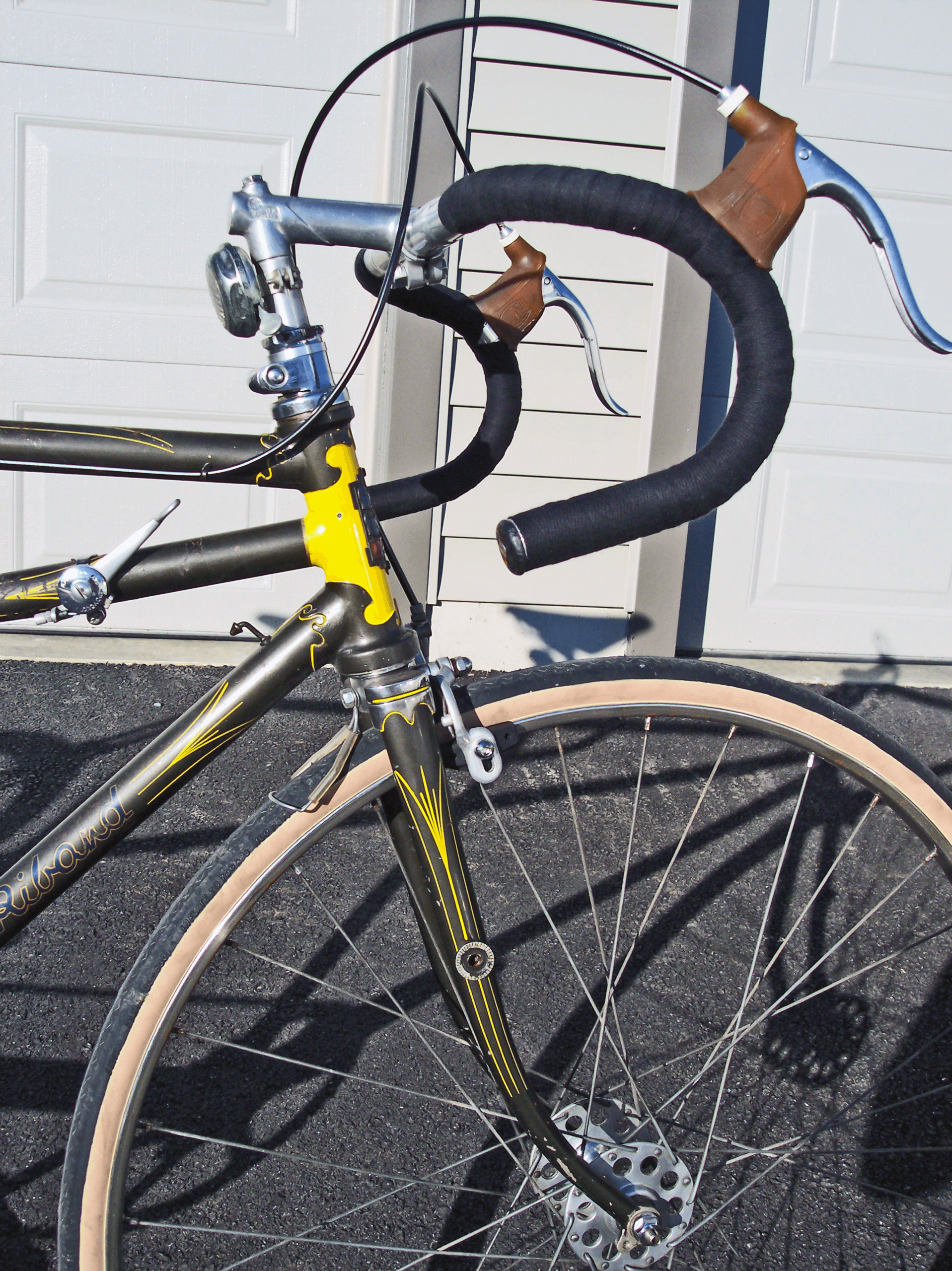
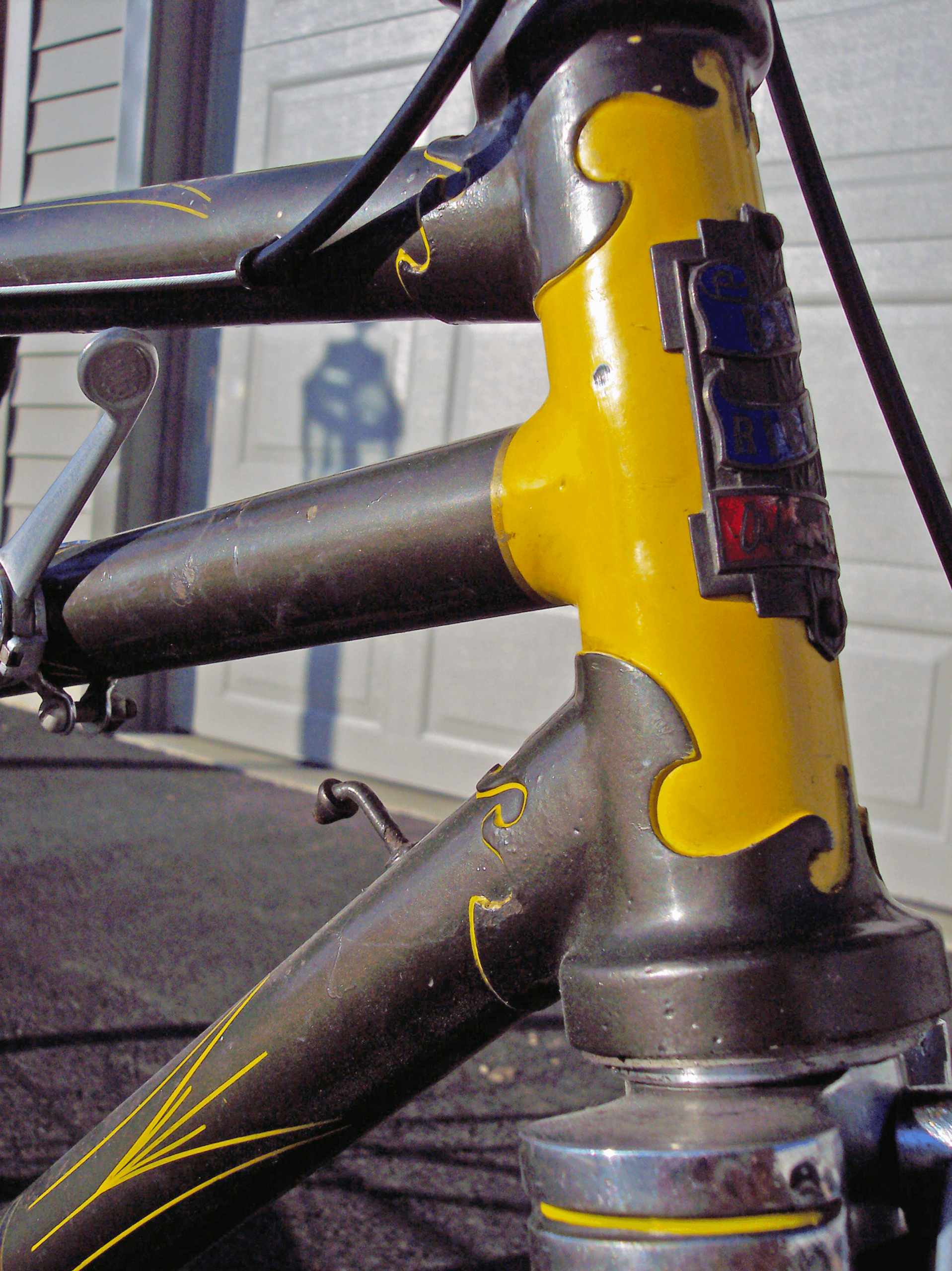
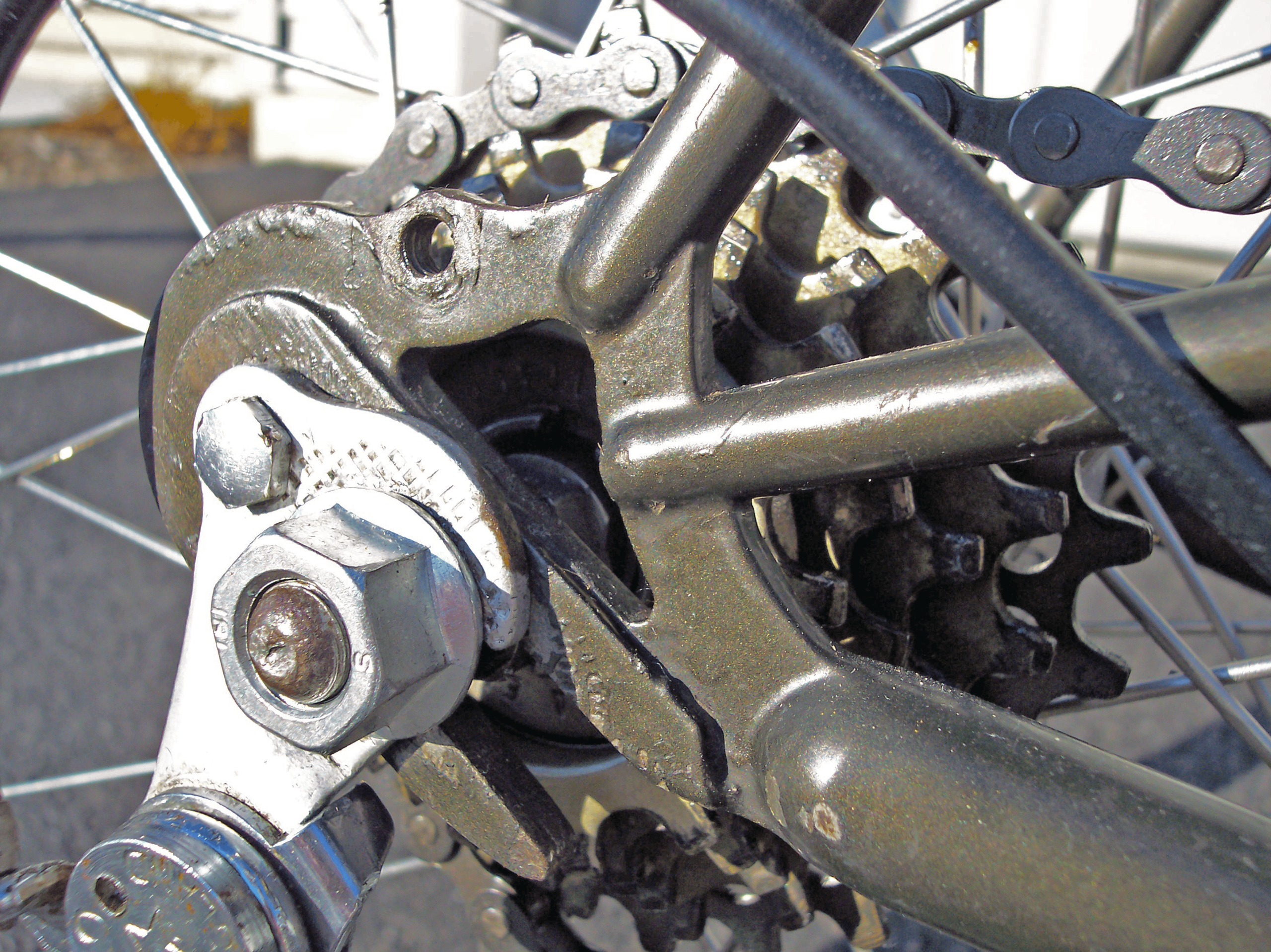
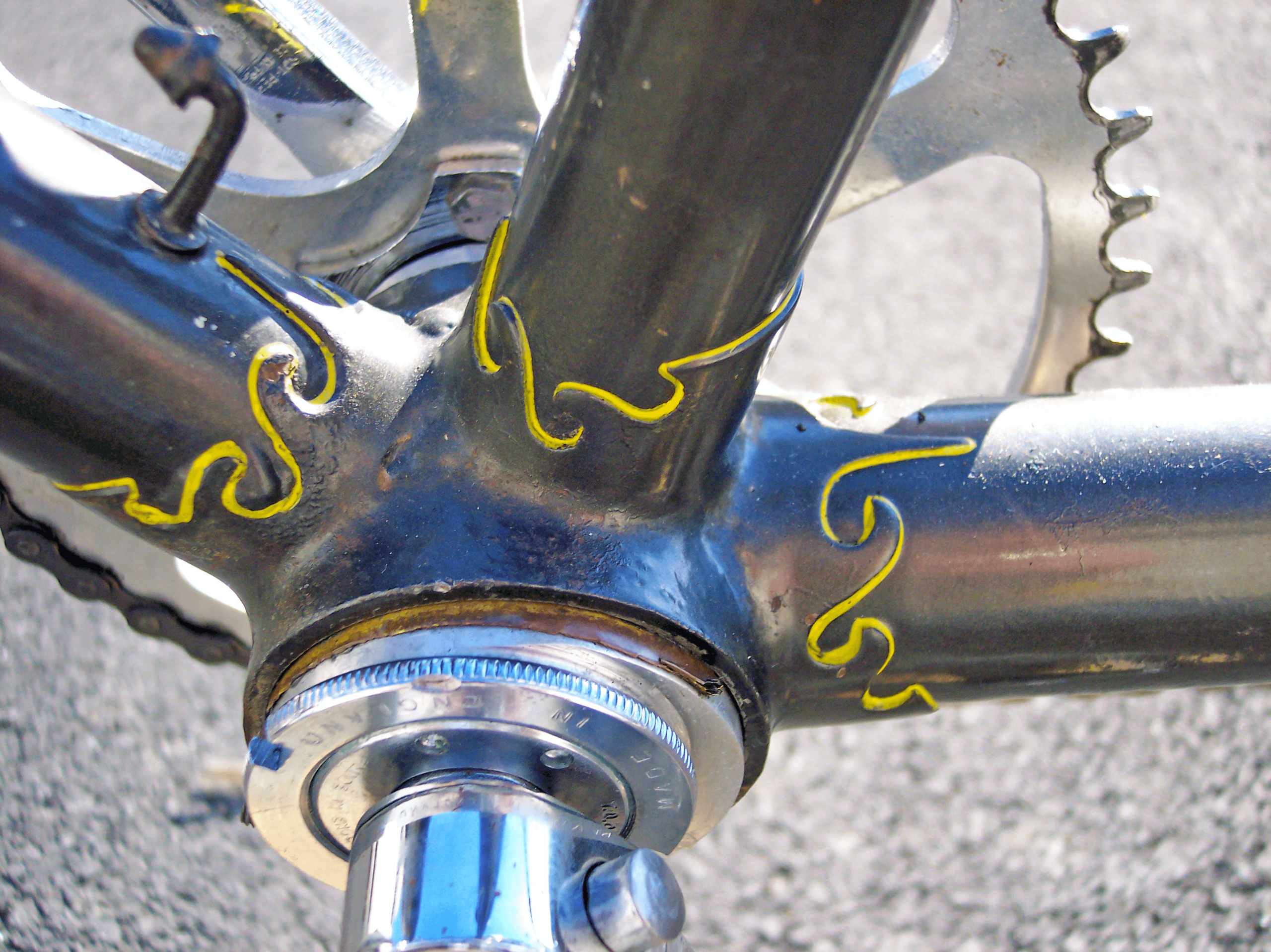
The Continental model remained a staple in the Hobbs of Barbican catalog, and race models such as the Championship rounded out the product line to offer a wide spectrum of frames and cycles for all purposes. It featured brazed construction and “malleable cast lugs of the finest quality,” and was marketed toward track riders as well as racers and “connoisseurs.” The Championship came spec’d with Lytaloy components throughout.
The Criterium, a track-specific model intended for riding in velodromes, was marketed as a solid frame with a reinforced head tube to enhance both strength and aesthetics. As stated in the 1937 catalog, the Criterium frame was welded throughout and filed to minute perfection to improve both the looks and strength of the joints.
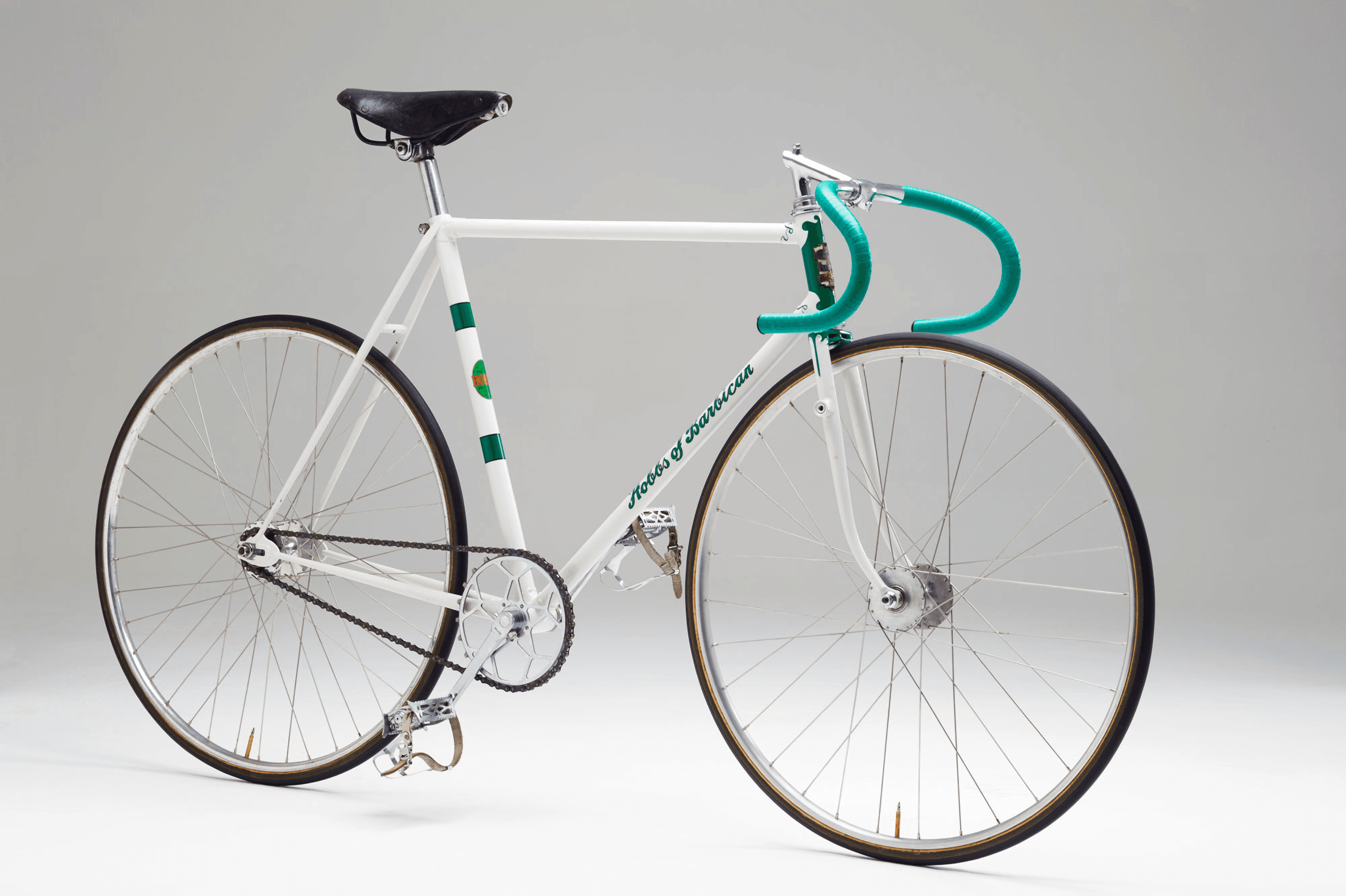
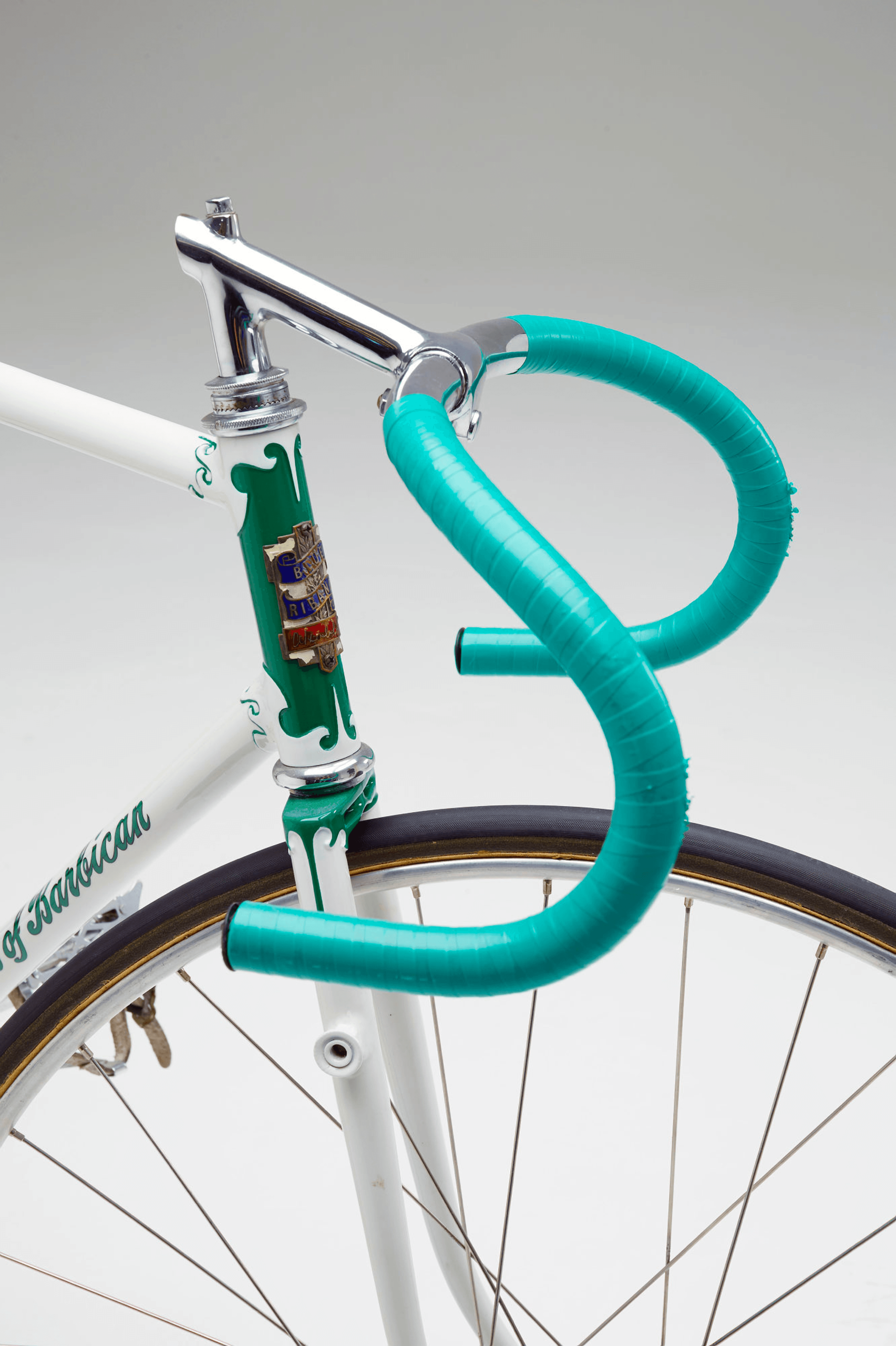
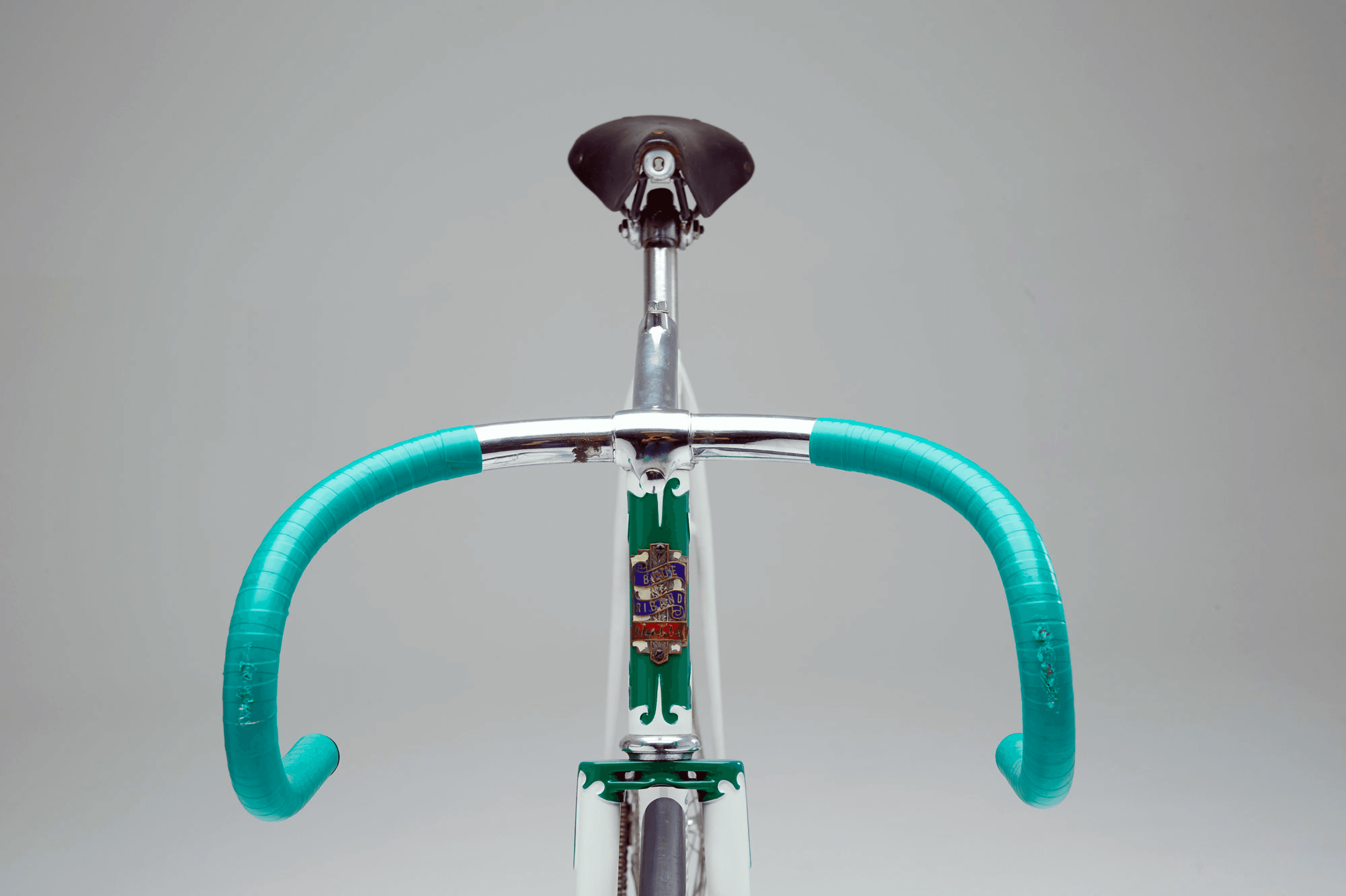
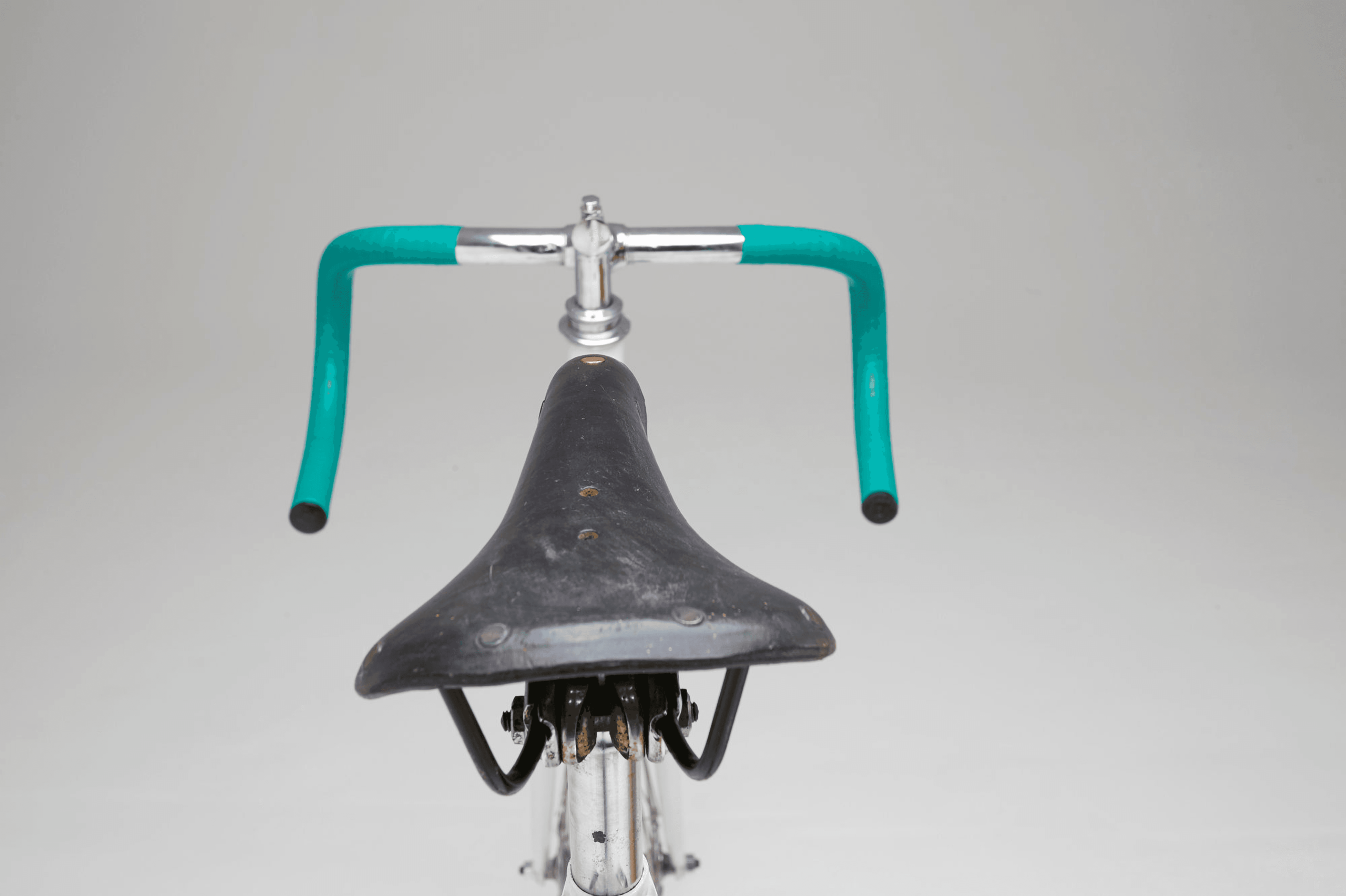
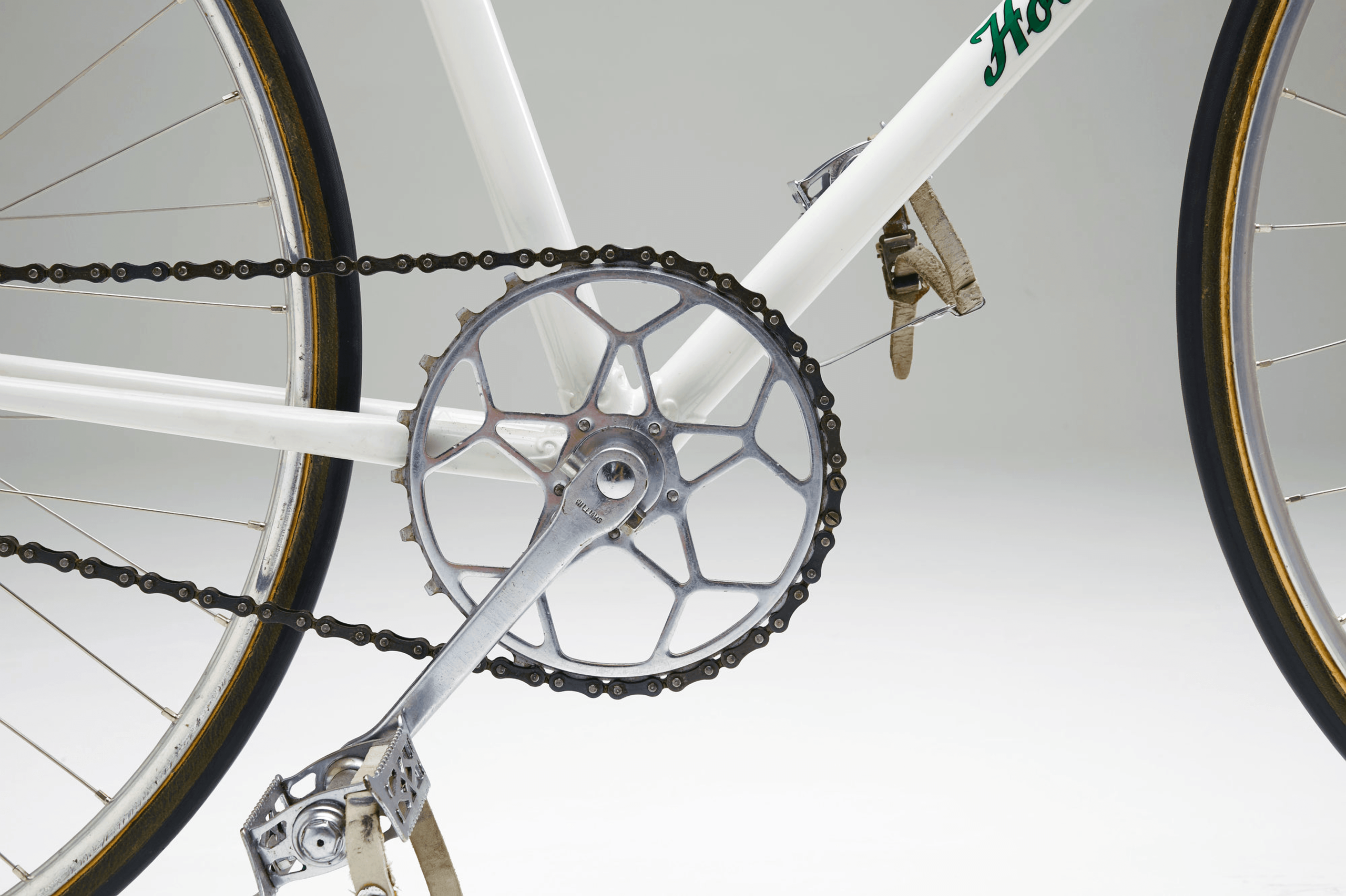
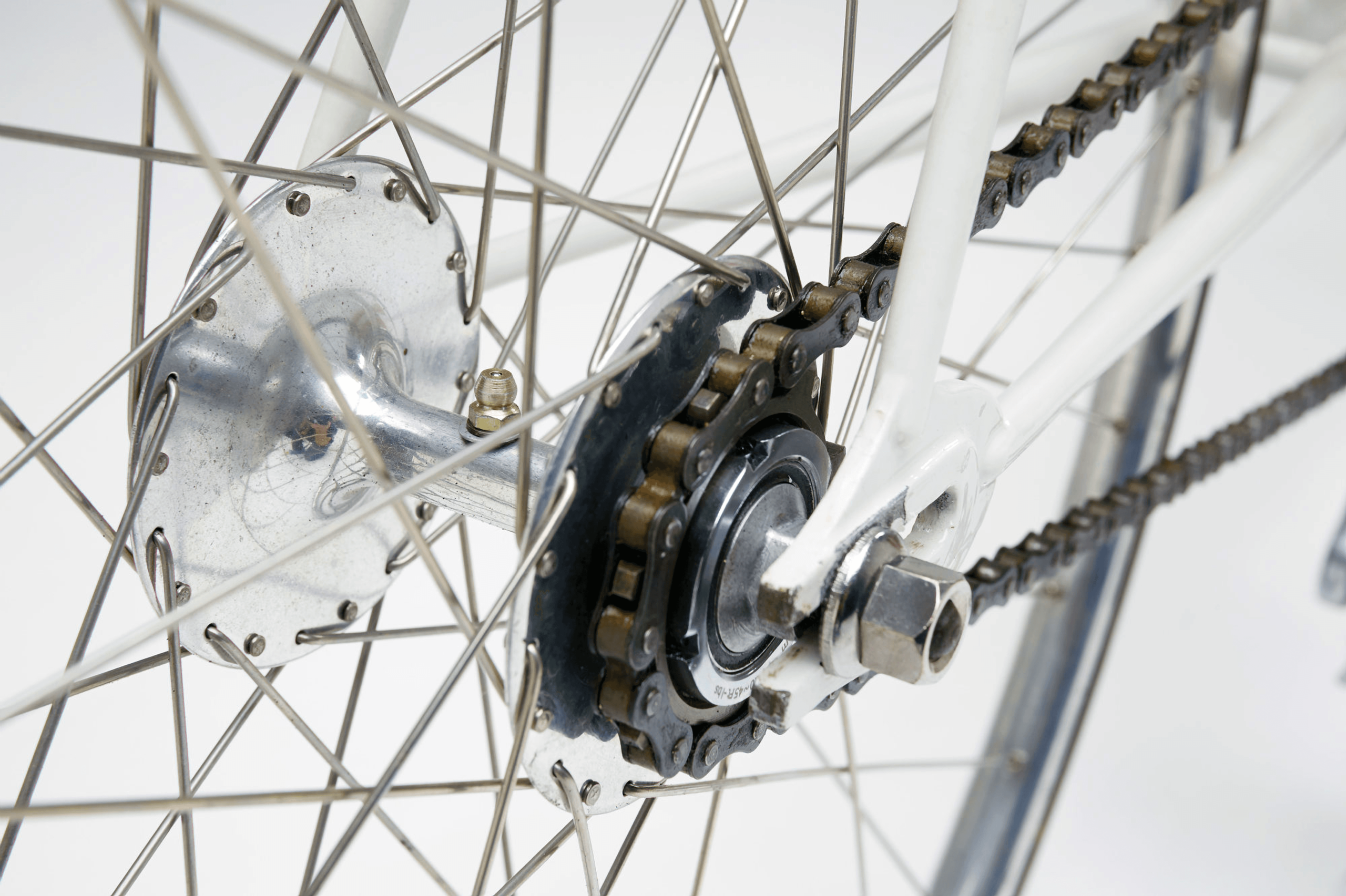
By 1952, the Blue Riband came in three different models: the Continental, Professional and Championship. The Professional came built to the specifications of the customer, with a fancier lug design than the base Continental model. The Championship constituted the high-end offering, distinguishable by its scroll and spearpoint lug design. It, too, came customized for each buyer and helped round out the top-end of the Hobbs line.
For the budget-minded consumer, Albert Hobbs offered the more affordably priced Sportsweight and Clubweight models, each with unique ride characteristics that made them practical for club racing, commuting or general recreational riding. The Streamweight models came in framesets only and were built with Kromo tubing. They were touted as affordable frames at the same quality as higher-priced competitors.
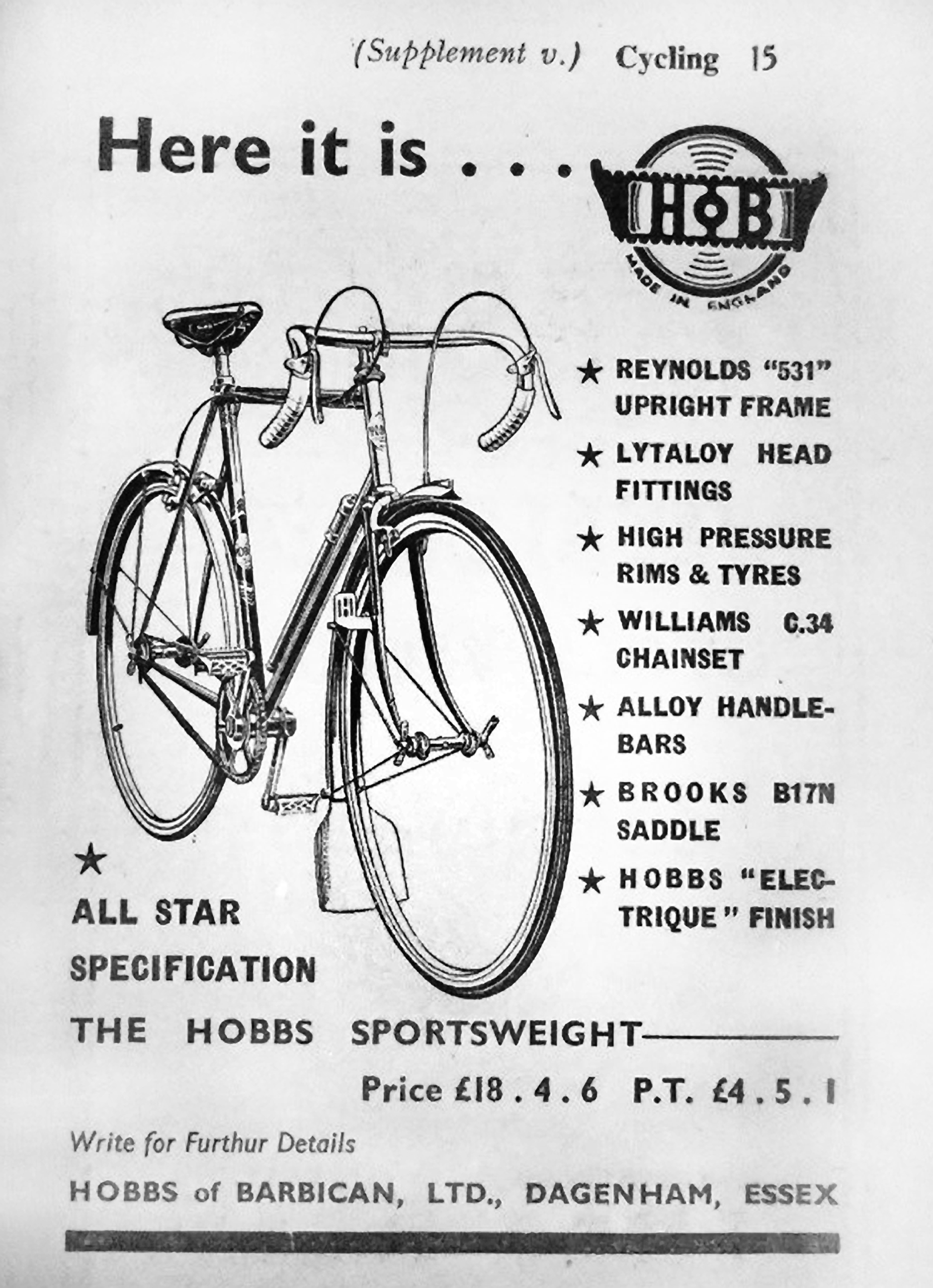
Identifying a Hobbs of Barbican bicycle may not tingle the spine the same way a handful of other vintage bicycles can, but they surely maintain a one-of-a-kind mystique. Unfortunately, like so many other cycling-related companies that operated around Europe’s war-torn era – specifically the late 1930s through the mid 1940s – most of the paperwork and records associated with Hobbs of Barbican no longer exist.
But according to the Veteran-Cycle Club, Hobbs of Barbican serial numbers do indicate manufacture dates, at least to some extent:
“For the first two years of post-war production, frames were initially numbered with a six, seven or eight digit number, the first two of which indicate the year of build.”
This differed from later dating and serial numbering methods:
“In 1947, Hobbs changed the numbering system to that used for the remainder of their time as a major frame-builder. Frame numbers were prefixed by a letter indicating the build month. The remainder of the number began with the digit indicating the year. Thus, the frame number B7500 was built in July 1947.”
The history behind Hobbs of Barbican tends not to weave through as much legend or lore as other notable companies of the same time and place, but consistency counts for a whole lot in tumultuous times. Consistently strong framesets that also ride well, consistent workmanship and marketing over the years, and a consistent desire to produce pinnacle products.
Albert Hobbs and Hobbs of Barbican accomplished that much and more throughout their brief but bright commitment to the bike world, leaving their mark on the lives of those who chose to ride bicycles in a time of war and automobiles, and those who recognize quality today among the growing universe of vintage cycling machines.
Certainly a sure sign the Hobbs of Barbican name lives on, contemporary companies should take note here: quality sells more bicycles than quantity, and customer relations count for just about everything else. Albert Hobbs and his namesake Hobbs of Barbican company proved these points a century ago and continue doing so today. Indeeed, Hobbs models remain highly sought after today by vintage bicycles enthusiasts worldwide, preceded by their reliable name and solid reputation, even long after the company has since ascended to bicycle heaven.
Duncan Granger for his Hobbs of Barbican tandem photos
Alan Johnson for his wonderful bikes and words about bikes
I have just acquired through eBay a HOBBS ladies mixte , can’t find much out about it on the internet anyone got any idea what year it was built the frame number is 30627
[…] Hobbs of Barbican: The Strength is in the Spine […]
I have just inherited a Hobbs bicycle. It needs some work but was wanting to check its age etc. Does anyone have a contact email that works for Mervyn Cook or others who may have taken over the Hobbs register?
[…] Readers who are interested in the history of Hobbs of Barbican and some other interesting photos of this particular tandem can be found in an EBykr article from December 2005 HERE. […]
I did have a very special Hobbs of Barbican cycle as it was made by myself and Dave Bedwell one weekend at the Sterling Works in Dagenham where I lived in those days.
If I have your email address I can send you a picture of me on the cycle.
George Staples.
I did have a very special Hobbs of Barbican cycle as it was made by myself and Dave Bedwell one weekend at the Sterling Works in Danenham where I lived in those days.
If I have your email address I can send you a picture of me on the cycle.
George Staples.
itoo have been trying to track Mervyn Cook as I have a 1930s(?) Hobbs frame #326. Legend has this cycle was used to set the 50 mile record . Can anyone help or is it of any interest to anyone? From what I believe this makes it one of the oldest ( and possibly tidiest ) around. Please feel free to e-mail me if you would like more info or pics, or if you can steer Melvyn or anyone else interested in it. I am unsure what exactly to do with it at the moment.
Hi.
The Hobbs bicycle is mentioned in a song by a band called The Buff Medways. The track is called “Medway Wheelers” , which I believe was a cycling club around in the 30s – 40s
On youtube –
http://www.youtube.com/watch?v=zOo7DepCd9w
…. cycling on a Hobbs Supreme, light weight, made to measure fixed wheel ???? crossbar ..
???? can’t make out this word..
I’m not a cycling buff but I think it’s a great song
I have in my possession a Hobbs Superbe model tandem with quite fancy
lugwork. I have owned this machine since about 1954. The lugwork is
idntical to the Blue Riband type. I bought the tandem scond hand from A
F Mills cycles (owner Sid Batham). The story was that this was Hobbs own
tandem but I have no evdence of this. It did have 27in. bamboo sprints
with it but the original wheels were 26in. steels with hp tyres. The
tandem was equipped with a Cyclo 4 speed eighth in. chains. It now has
27in. srints with tubular tyres, Weinmann side pull brakes and 60 tooth
driving chainwheel. I had the frame re-enamelled round about 1980 but
has been little used since then. In the restoring process the original
head badge was lost so I had a stick on type made up with the original
Hobbs scroll. The tandem was extensively raced in the 50’s & 60’s both
on the road in time trials and on the track(mainly Herne Hill. the
numbers on the front bottom bracket are as best as I can tell are
3-643. I have been trying to contact mervyn cook with no success to find out any further info. I have a photo of it in racing action but am unable at moment to attach it. look forward to your response
Cheers Joe
As a new owner of a 1950 Superbe tandem frame I’m delighted to find your pix, which will help with my rebuild/restoration project. Can you put me in touch with the owner of this tandem, who I guess is in the USA (I’m in the UK)? Or any other Hobbs tandem owners?
BTW I also own a solo Hobbs frameset, and rode many miles on a Hobbs as a teenager.
Hello Timm,
Sounds like a wonderful pair of Hobbs you have there. Thanks for rescuing them and sharing a bit of their past with us. We would happily add photos of these bicycles when available, either here in this Hobbs article or a separate Tech Specs feature.
Kind regards,
Eric
Hello!
Congratulations on a nice, informative Hobbs website which I have per chance just come across.
I own 2 Hobbs, one a lugless Jan 1947 model, presumably a raceweight or sportweight, Mervyn Cook of the VCC cannot determine quite definitely which model it is. Mz next door neighbour gave it to me about 6 years ago, it was in a poor state, but I managed to restore it to its former glory. It is black with white panels and red script on the downtube, and it has feather lining. I ride it on 80″ fixed gear, with an original double-fluted BSA crankset, which at that time was regarded as “the bee’s knees.” I even found an original 1948 GB handlebar in original wrapping and packing, which is now fitted to a chrome plated GB stem. The wheels (I built myself) feature Conloy rims on LF Racelite hubs. And it still has its original Brooks 57 saddle! It all looks rather nice. Once I got an electronic photo, I will send it to you.
The second is an Oct 1950 “Savernake” model, which has not been mentioned in your website at all. The name “Savernake” is borrowed from an ancient forest in the south of England. It is in need of restauration, unfortunately Lytaloy components are now impossible to get hold off, “rarer than hens’ gold teeth”, as we say here in GB. Currently it features v. early Campagnolo gears, but of course they are not right for the period.
Once the weather is warmer, I will strip down all the paint (tatty, hand-applied by a previous owner), and repaint it properly with primer undercoat and quality lacquer, applied with a special quality brush. It is going to be Brunswick green (dark British Racing Green) with light green panels and red “Hobbs of Barbican” script transfers on the down tube.
Greetings and best regards. Don’t fall off.
Timm F
If memory serves, that design is called a ‘marathon’ and Santana used it for their early tandems. Most builders went to ‘direct internal’ where the extra tube runs to the stoker’s BB to save few ounces, but this is still a great design.